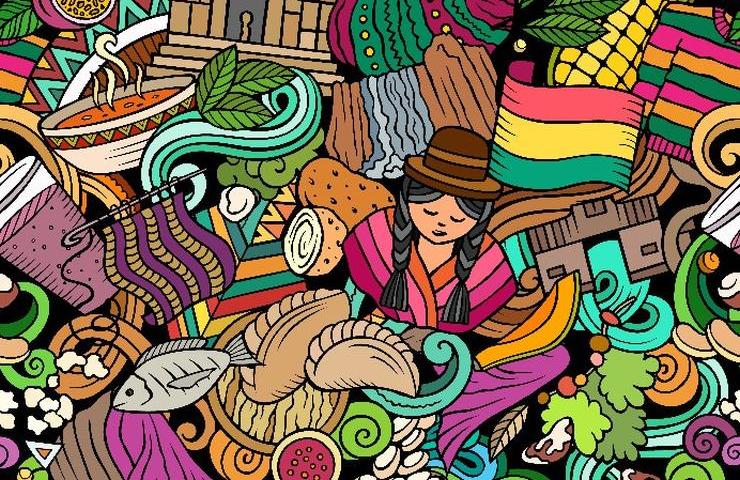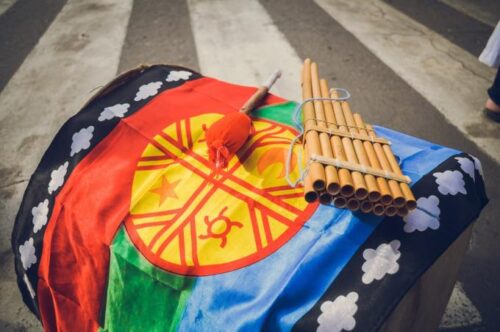Ch’alla. Rite of Thanksgiving to Mother Earth.

It is a rite of gratitude of the native Andean peoples towards Pachamama (Mother Earth), an obligatory gesture towards nature to obtain better crops, health, and prosperity in all activities of daily life.
In Bolivia, the ceremony stands out for its picturesque authenticity, with an outpouring of gifts to Mother Earth, while at the same time establishing itself as another occasion for recreation, joy, and socialization in the carnival period. Each place celebrates tradition with local rhythms, dances, traditional food, and drinks, as a gesture of worship to nature. This acts as a fertility rite, typical of the Andean populations through which benefits are asked while feeding and thanking the Pachamama.

Bolivia is home to more than 30 indigenous nations, but the Aymara and Quechua ethnic groups. Photo: MaxPixel
Bolivia is home to more than 30 indigenous nations, but the Aymara and Quechua ethnic groups are most prevalent in the Andean Mountain range and plateau, where food and beer are offered as symbolic elements with the Ch’alla ritual, although they are often mixed with flowers, jams and pedardi.
In the countryside, as well as in the city, houses, cars, businesses, and other household goods are decorated at dawn.
In the rural environment, especially in the cold season, the earth needs material (irrigation) and spiritual care – according to the ancestral cosmic vision of these peoples. The fields are basically covered with flower petals, and in a symbolic gesture a pot of boiled potatoes, cigars, coca leaves and alcohol is buried to feed the Pachamama.

Bolivia. Lake Titicaca. Photo: MaxPixel
Meanwhile, the ritual is completed by songs and dances, and its protagonists drink to reinvigorate the ceremony, in a kind of intense communion with nature.
As a socio-cultural counterpoint, in the cities on the day of the ch’alla, the houses are decorated with coloured festoons. Alcohol, daisy petals, and jams are sprinkled on the corners of the houses.
Food, the key element
Food is a key element, and every region has a traditional dish that accompanies this celebration. In Cochabamba, in the Bolivian tropics, for example, the traditional chajchu is served, made with fried lamb. In the rural areas of the plateau, it is customary to eat the ancestral aptapi, which consists of a common offering, in which each diner brings a contribution, usually potatoes, tuntas, chuños, meat, corn, beans and other foods of the region.
The popular ‘puchero’, a kind of soup with a variety of meats, accompanied by chickpeas, cabbage, corn, turnips, potatoes, spices and a hot onion sauce, is served in the city of La Paz.
Drinks include beer, chicha, and singani, a grape brandy, one of the most popular in the country.

The Ch’alla ritual is completed by songs and dances. 123rf.com
Another important component is the table or apxata, a colourful altar where offerings are made to the Pachamama. Fruit, sweets, spices, cereals, candies, nuts, wine, alcohol, flower petals, festoons, a llama foetus, and other symbolic elements are arranged on the table. As part of the ritual, the gifts are burned and smoked with aromatic koa wood and a palo santo, and then buried as an offering to Mother Earth.
It is common to set off firecrackers during the ceremony, both in the city and in the countryside, because the noise will drive away bad spirits, according to local beliefs.
The ch’alla was traditionally celebrated in the month of August when, after a harsh winter, the earth needed to ‘open up’ and receive the benefits of the faithful. Today its celebration has been extended to the months of February and March, coinciding with the Bolivian carnival, especially after the festival of Jis ́ka Anata, another gesture of thanksgiving and prayer to the Pachamama. (Illustration: 123rf.com)
Odalys Buscarón Ochoa



